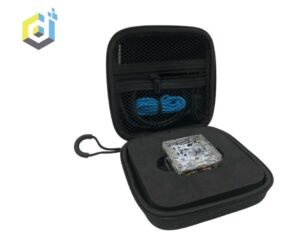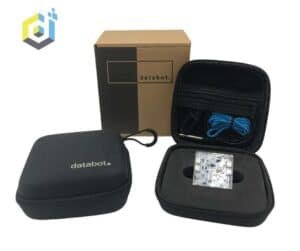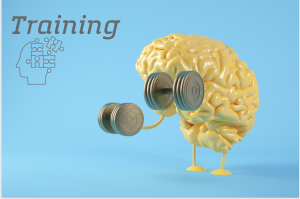
databot™ and CO2 Science - Some Background
This summer databot™ took a deep dive into the science of CO2 in a new curriculum called the CO2 Science Series. Life Science, Chemistry, Earth Science, and Environmental activities draw students into an interdisciplinary exploration in which the common thread through them all is CO2. In July, students attending virtual programs used databot™ at home to explore the air quality under the kitchen sink, study carbon sequestration in the back yard, explore applied mathematics through data collection, and more.

Five curriculum modules investigate gas density, chemical reactions, human respiration, indoor air quality, and climate change through hands-on experiments and data collection with databot™. The common thread through all these activities? CO2!

The databot Virtual Process
databot curriculum is organized into “modules” comprised of five activities and an overview section complete with background information, standards alignment, and additional resources. The five activities are 2 short introductory activities, a longer experiment, and two extensions, a challenge and collaboration activity designed for groups.
For our virtual program we focused primarily on the first three activities, but if you have remote groups the collaborative “data games” are awesome fun.
The basic process we followed for an online class:
- Stage the activity with background information and discussion. In our density of gases module, the Cave of Dogs, a science mystery is posed to students and they make educated guesses as to what is going on. Each activity provides a clue to solve this “science mystery.”
- Activities are demonstrated to students via video so they understand the procedure, then they do the experiment at home.
- Groups reconvene online and report their findings for discussion.
- Repeat until the module is complete.

Students at home sit in on a virtual CO2 Science class on gas density. Activities demonstrated how to create CO2, weigh it, and identify CO2 characteristics that are different compared to air.
This simple to follow recipe provides a nice mix of inquiry and discussion as well as independent experimentation. It also provides students with the social interaction of a live classroom as they share stories of their experiment – successes and failures.
|

Curriculum Highlight
The databot™ CO2 Science Series provides you with the curriculum and support required to conduct multi-day STEM camp experiences. CO2 Science transforms the way students see the world around them as they collect, view and experience data in this interdisciplinary exploration of CO2 spanning activities in Chemistry, Life Science, and Earth Science!
- Module 1 (Chemistry): The Cave of Dogs – Density of Gases
- Module 2 (Chemistry): Ready, Set, Reaction! – Chemical Reactions
- Module 3 (Life Science): Breathe – Human Respiration
- Module 4 (Climate Change): You’re Getting Warmer!
- Module 5 (Earth Science): Something’s in the Air! – CO2 and Air Quality
Using the databot™ CO2 sensor in combination with temperature, humidity, light and more students discover that we interact with carbon dioxide in many ways doing engaging, hands-on activities ranging from building a model lung to simulating a cave-science mystery that is over 300 years old!

The Cave of Dogs activities pose a science mystery – why can people walk around freely and explore this unusual cave in Italy but their dog will pass out if it enters? Scientific sleuthing at its best!
The Importance of Data Literacy
Data literacy – what is it and why is it important? If you think about the world we live in it becomes evident quickly that the ability to read, interpret, and communicate data clearly might be the most valuable skill on the planet in the 21st century. Self driving cars, autonomous drone fleets, business intelligence that feeds us the exact advertising at the exact time required to convert our purchase – all of this is powered by data.
As citizens of a data driven world it is our responsibility to become data literate to make informed decisions. When students work on data driven activities like those in the CO2 series, they are building valuable skills in the collection, visualization, and interpretation of scientific data. These skills are transferrable to all other types of data whether it is business intelligence, Covid 19 statistics, or the latest data from Mauna Loa Observatory telling us our planetary CO2 levels are continuing to rise.


The Next Generation Science Standards are an impressive body of work developed to guide science education for the 21st century. One of the three cornerstones of the NGSS are the eight Science and Engineering Practices that are identified as essential for all students to learn. Importantly, the 4th practice is Analyzing and Interpreting data. Whenever students are conducting data oriented activities such as those in the CO2 series, they are learning to collect and analyze data – an invaluable skill that can be applied to any career of the 21st century. The more comfortable we can make our students when interacting with data today, the more successful they will be tomorrow.
databot Rocks! Get Yours Today!
-
databot
databot Single
Rated 0 out of 5$189.99 Select options This product has multiple variants. The options may be chosen on the product page -
databot
databot – Twin Pack
Rated 0 out of 5$375.00 Select options This product has multiple variants. The options may be chosen on the product page -
databot
databot – Class Pack
Rated 0 out of 5$1,850.00 Select options This product has multiple variants. The options may be chosen on the product page -
databot
databot Training Modules
Rated 0 out of 5$399.00 – $1,000.00 Select options This product has multiple variants. The options may be chosen on the product page




